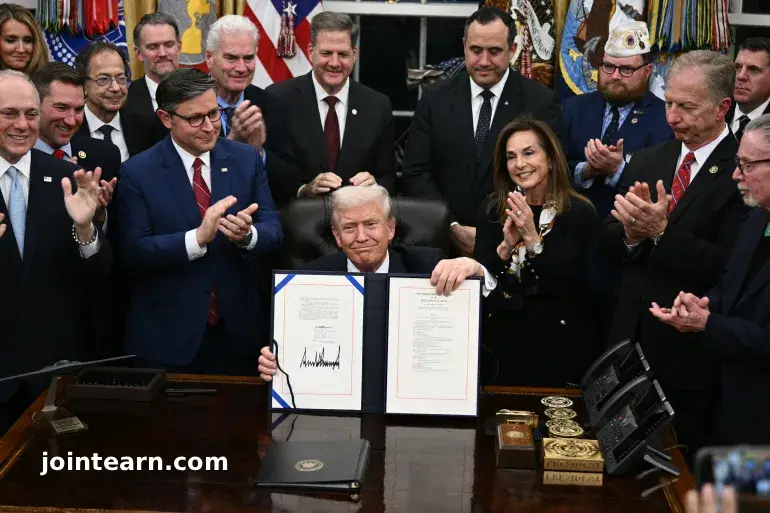
In a historic move, U.S. President Donald Trump has signed a federal government spending bill, officially ending the longest government shutdown in U.S. history. The signing came less than two hours after the House of Representatives passed the measure, which had been delayed amid intense partisan disputes.
“This is a significant moment for the American people,” President Trump said during the late-night signing ceremony in the Oval Office. “With my signature, the federal government will now resume normal operations, and we will continue working to reduce the cost of living for all Americans.”
Key Details of the Spending Bill
The newly enacted bill extends federal funding until January 30, 2026, and passed the Republican-controlled House of Representatives with a vote of 222 to 209. Earlier this week, the Senate approved the measure with bipartisan support, including seven Democrats and one independent.
The legislation officially ends the 43-day federal government shutdown, which began on October 1, 2025, leaving essential services operating at a minimal level while hundreds of thousands of federal workers were furloughed or forced to work without pay.
Approximately 670,000 civil servants were furloughed, and a similar number continued working under unpaid conditions. Following the bill’s passage, affected workers are now expected to receive retroactive back pay, restoring financial stability for millions of households across the country.
Economic and Social Impact
The government shutdown severely affected public services, air travel, and the nation’s economy. Economists estimate that the closure reduced the U.S. GDP by more than a tenth of a percentage point every six weeks. While most of this lost output is expected to be recouped in the coming months, sectors such as air travel, healthcare, and food assistance programs faced significant disruption.
The end of the shutdown comes just in time to ensure the restoration of federal services before the Thanksgiving holiday travel surge, easing concerns for millions of travelers. Additionally, resumption of food assistance programs may help American families prepare for the Christmas season and support holiday spending.
Remaining Challenges: Healthcare Subsidies
Despite ending the shutdown, the spending bill does not address a major point of contention: health insurance subsidies under the Affordable Care Act (ACA). Approximately 24 million Americans rely on these subsidies, which are set to expire at the end of the year. The Senate is scheduled to vote on the matter in December, leaving uncertainty for millions of Americans who depend on federal health coverage.
Political Fallout and Reactions
The 43-day closure prompted finger-pointing from both major political parties. A recent Reuters/Ipsos poll indicated that 50% of Americans blamed Republicans for the shutdown, while 47% held Democrats responsible.
During the signing ceremony, President Trump criticized Democrats, stating, “This is no way to run a country. We can never let this happen again.” House Speaker Mike Johnson also condemned Democrats, calling their actions “pointless, wrong, and cruel.”
Democratic Representative Mikie Sherrill, soon-to-be Governor of New Jersey, warned against acquiescing to the Trump administration’s priorities, urging Congress to defend food security and healthcare for American families.
Legal expert Bruce Fein described the agreement as a temporary measure rather than a definitive victory for Republicans, highlighting ongoing disagreements over federal spending priorities, military funding, and social welfare programs.
Long-Term Fiscal Implications
The passage of the spending bill continues the federal government’s trajectory of adding roughly $1.8 trillion annually to the national debt, which currently stands at around $38 trillion. While ending the shutdown alleviates immediate economic stress, experts caution that future budget disputes could trigger additional closures if bipartisan consensus is not reached.
Conclusion
The signing of the spending bill marks the end of the longest government shutdown in U.S. history, providing relief to federal employees, families, and businesses affected by nearly six weeks of operational disruption. However, unresolved issues like healthcare subsidies and long-term fiscal management suggest that political and economic challenges remain.
The American public will closely watch upcoming Senate votes and government actions in the coming months, with the hope that future budgetary negotiations will avoid similar crises.

Leave a Reply